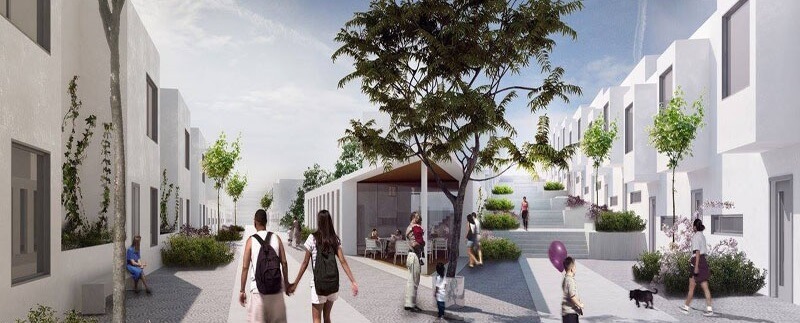
Affordable housing in Pakistan includes the housing developed by the common people, no-profit and no-loss housing schemes by the government and private housing societies. Here is a brief discussion of the different forms of affordable housing in Pakistan. Providing cheap housing is the best way to overcome homelessness in Pakistan.
Housing by local people
This is the most successful form of affordable housing in Pakistan. The sub-urban dwellings and societies are up-lifted to reasonable housing standards. The people have houses but not general facilities like roads, water supply, gas, electricity, park, water drainage, etc. The local people themselves collect the money and also get aid from the government or different organizations like the United Nations Educational, Scientific and Cultural Organization (UNESCO). Afterward, they establish the infrastructure like roads, water or gas supply, etc. The most popular project of this kind is Khuda-ki-Basti, or God’s Settlement, located in Karachi, Pakistan. This affordable housing provided homes to poor people.
No-profit and no-loss housing by the government
This affordable housing covers only the middle-class and employed people in Pakistan. The idea is to build the housing in bulk quantity and sale a no-profit no-loss basis. This type of housing was first started in 1987 and still is very popular for providing affordable housing for middle-class and employed people. These housing schemes help middle-class people to get housing at low prices as compared to the open market. Ashiana housing scheme by the government of Punjab is a recent effort to provide affordable housing in Pakistan.
Private housing schemes
The private housing societies also provide affordable housing for middle-class people. These societies allot the plots and also construct these plots for the general public. The public has to pay the monthly installments. The duration of the installments is five to ten years. After that time the person is the owner of the developed property. The most successful housing societies of this form are Bahria Town, Eden homes, Lake City, and Izhar Monnoo housing.
Conclusions:
It can be concluded that in Pakistan there are efforts to provide affordable housing but on small scale. The general public couldn’t benefit from these efforts due to the high population growth rate. This is important to start affordable housing developments in every district of Pakistan. The government should also start housing benefits for the people who cannot afford homes even at affordable or discount rates. Otherwise, homelessness will increase in Pakistan and home ownership would be just a dream.
